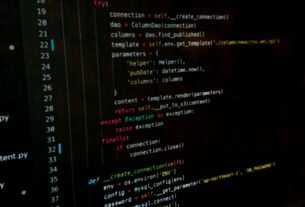Question or problem about Python programming:
I’ve got a dataframe called data. How would I rename the only one column header? For example gdp to log(gdp)?
data =
y gdp cap
0 1 2 5
1 2 3 9
2 8 7 2
3 3 4 7
4 6 7 7
5 4 8 3
6 8 2 8
7 9 9 10
8 6 6 4
9 10 10 7
How to solve the problem:
Solution 1:
data.rename(columns={'gdp':'log(gdp)'}, inplace=True)
The rename show that it accepts a dict as a param for columns so you just pass a dict with a single entry.
Also see related
Solution 2:
A much faster implementation would be to use list-comprehension if you need to rename a single column.
df.columns = ['log(gdp)' if x=='gdp' else x for x in df.columns]
If the need arises to rename multiple columns, either use conditional expressions like:
df.columns = ['log(gdp)' if x=='gdp' else 'cap_mod' if x=='cap' else x for x in df.columns]
Or, construct a mapping using a dictionary and perform the list-comprehension with it’s get operation by setting default value as the old name:
col_dict = {'gdp': 'log(gdp)', 'cap': 'cap_mod'} ## key→old name, value→new name
df.columns = [col_dict.get(x, x) for x in df.columns]
Timings:
%%timeit
df.rename(columns={'gdp':'log(gdp)'}, inplace=True)
10000 loops, best of 3: 168 µs per loop
%%timeit
df.columns = ['log(gdp)' if x=='gdp' else x for x in df.columns]
10000 loops, best of 3: 58.5 µs per loop
Solution 3:
How do I rename a specific column in pandas?
From v0.24+, to rename one (or more) columns at a time,
-
DataFrame.rename()withaxis=1oraxis='columns'(theaxisargument was introduced inv0.21. -
Index.str.replace()for string/regex based replacement.
If you need to rename ALL columns at once,
DataFrame.set_axis()method withaxis=1. Pass a list-like sequence. Options are available for in-place modification as well.
rename with axis=1
df = pd.DataFrame('x', columns=['y', 'gdp', 'cap'], index=range(5)) df y gdp cap 0 x x x 1 x x x 2 x x x 3 x x x 4 x x x
With 0.21+, you can now specify an axis parameter with rename:
df.rename({'gdp':'log(gdp)'}, axis=1) # df.rename({'gdp':'log(gdp)'}, axis='columns') y log(gdp) cap 0 x x x 1 x x x 2 x x x 3 x x x 4 x x x
(Note that rename is not in-place by default, so you will need to assign the result back.)
This addition has been made to improve consistency with the rest of the API. The new axis argument is analogous to the columns parameter—they do the same thing.
df.rename(columns={'gdp': 'log(gdp)'}) y log(gdp) cap 0 x x x 1 x x x 2 x x x 3 x x x 4 x x x
rename also accepts a callback that is called once for each column.
df.rename(lambda x: x[0], axis=1) # df.rename(lambda x: x[0], axis='columns') y g c 0 x x x 1 x x x 2 x x x 3 x x x 4 x x x
For this specific scenario, you would want to use
df.rename(lambda x: 'log(gdp)' if x == 'gdp' else x, axis=1)
Index.str.replace
Similar to replace method of strings in python, pandas Index and Series (object dtype only) define a (“vectorized”) str.replace method for string and regex-based replacement.
df.columns = df.columns.str.replace('gdp', 'log(gdp)') df y log(gdp) cap 0 x x x 1 x x x 2 x x x 3 x x x 4 x x x
The advantage of this over the other methods is that str.replace supports regex (enabled by default). See the docs for more information.
Passing a list to set_axis with axis=1
Call set_axis with a list of header(s). The list must be equal in length to the columns/index size. set_axis mutates the original DataFrame by default, but you can specify inplace=False to return a modified copy.
df.set_axis(['cap', 'log(gdp)', 'y'], axis=1, inplace=False) # df.set_axis(['cap', 'log(gdp)', 'y'], axis='columns', inplace=False) cap log(gdp) y 0 x x x 1 x x x 2 x x x 3 x x x 4 x x x
Note: In future releases, inplace will default to True.
Method Chaining
Why choose set_axis when we already have an efficient way of assigning columns with df.columns = ...? As shown by Ted Petrou in [this answer],(https://stackoverflow.com/a/46912050/4909087) set_axis is useful when trying to chain methods.
Compare
# new for pandas 0.21+ df.some_method1() .some_method2() .set_axis() .some_method3()
Versus
# old way df1 = df.some_method1() .some_method2() df1.columns = columns df1.some_method3()
The former is more natural and free flowing syntax.
Solution 4:
There are at least five different ways to rename specific columns in pandas, and I have listed them below along with links to the original answers. I also timed these methods and found them to perform about the same (though YMMV depending on your data set and scenario). The test case below is to rename columns A M N Z to A2 M2 N2 Z2 in a dataframe with columns A to Z containing a million rows.
# Import required modules import numpy as np import pandas as pd import timeit # Create sample data df = pd.DataFrame(np.random.randint(0,9999,size=(1000000, 26)), columns=list('ABCDEFGHIJKLMNOPQRSTUVWXYZ')) # Standard way - https://stackoverflow.com/a/19758398/452587 def method_1(): df_renamed = df.rename(columns={'A': 'A2', 'M': 'M2', 'N': 'N2', 'Z': 'Z2'}) # Lambda function - https://stackoverflow.com/a/16770353/452587 def method_2(): df_renamed = df.rename(columns=lambda x: x + '2' if x in ['A', 'M', 'N', 'Z'] else x) # Mapping function - https://stackoverflow.com/a/19758398/452587 def rename_some(x): if x=='A' or x=='M' or x=='N' or x=='Z': return x + '2' return x def method_3(): df_renamed = df.rename(columns=rename_some) # Dictionary comprehension - https://stackoverflow.com/a/58143182/452587 def method_4(): df_renamed = df.rename(columns={col: col + '2' for col in df.columns[ np.asarray([i for i, col in enumerate(df.columns) if 'A' in col or 'M' in col or 'N' in col or 'Z' in col]) ]}) # Dictionary comprehension - https://stackoverflow.com/a/38101084/452587 def method_5(): df_renamed = df.rename(columns=dict(zip(df[['A', 'M', 'N', 'Z']], ['A2', 'M2', 'N2', 'Z2']))) print('Method 1:', timeit.timeit(method_1, number=10)) print('Method 2:', timeit.timeit(method_2, number=10)) print('Method 3:', timeit.timeit(method_3, number=10)) print('Method 4:', timeit.timeit(method_4, number=10)) print('Method 5:', timeit.timeit(method_5, number=10))
Output:
Method 1: 3.650640267 Method 2: 3.163998427 Method 3: 2.998530871 Method 4: 2.9918436889999995 Method 5: 3.2436501520000007
Use the method that is most intuitive to you and easiest for you to implement in your application.
Solution 5:
Use the pandas.DataFrame.rename funtion.
Check this link for description.
data.rename(columns = {'gdp': 'log(gdp)'}, inplace = True)
If you intend to rename multiple columns then
data.rename(columns = {'gdp': 'log(gdp)', 'cap': 'log(cap)', ..}, inplace = True)



